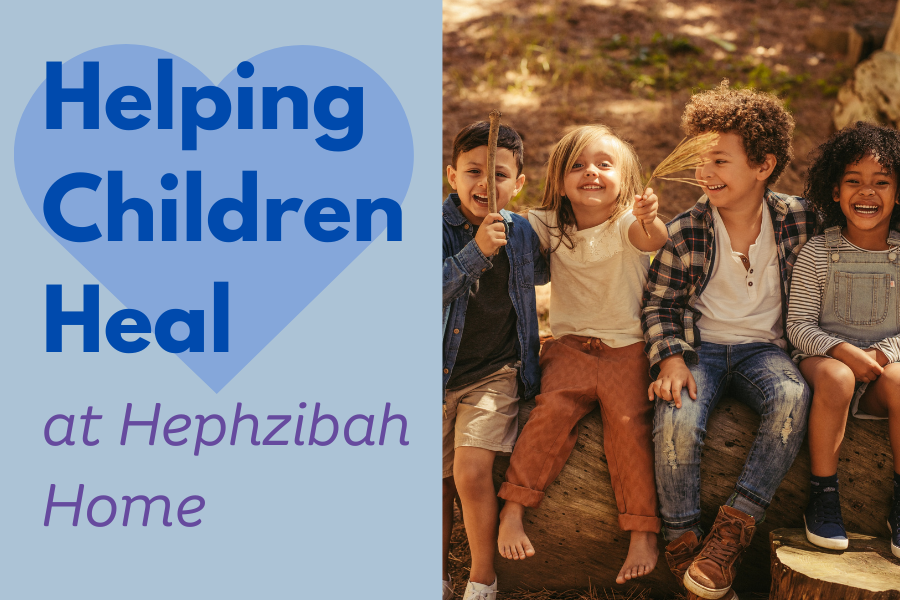From a new gross-motor room to art, pet and garden therapy, we’re doing more than ever to help traumatized children heal at Hephzibah Home.
Executive Director Merry Beth Sheets was working late one night when a young child at Hephzibah Home strolled into her office to say hello.
Sheets looked up and said, “Hi sweetpea. What are you up to?” “I’m on my evening walk,” said the 7-year-old. When Sheets commented that a walk was a great way to burn off energy before bedtime, he paused and said, “Yeah, the energy . . . but my stress and sadness and all my anger too.”
The conversation lasted all of two minutes, but it spoke volumes about the neglected and abused children in our care. During the year, we employed a host of innovative therapies to help these children heal and thrive.
Because trauma profoundly shapes how children think, behave and respond, we trained our residential team in Think Trauma, a program designed to educate direct-care professionals about trauma and its impact. During this training, our residential counselors learned new strategies for working with the children at Hephzibah Home so that these young survivors of neglect and abuse can move beyond their trauma to live happy, healthy, productive lives.
One residential counselor noted that the focus on vicarious trauma was an unexpected benefit of the training. Often referred to as “the cost of caring,” vicarious trauma is a common experience for those who engage empathically with trauma survivors. “We learned about self-care strategies and restorative practices, as well as the importance of seeking support from others,” confided the counselor.
Brain imaging studies show that trauma is encoded in the right brain, which stores information without words or timelines. Children also lack the self-awareness and verbal skills to discuss their traumatic pasts in talk therapy. For both of these reasons, our clinical team incorporated Sensory Motor Arousal Regulation Treatment (SMART) into its therapeutic toolkit to help the children process their trauma through sensory interventions, movement, rhythm and physical play.
“Our clinicians received intensive training in SMART therapy to prepare for the opening of our new gross-motor room in Fall 2022,” says Clinical Coordinator Lucy Scott, LCPC. “The children have so much fun during their gross-motor sessions that they hardly notice they’re learning how to self-regulate by bouncing on a big ball or building relational skills by throwing a ball back and forth.”
During the growing season, our children continued to find solace in nature through garden therapy as they learned how to cultivate, harvest and cook nutritious foods while working on social skills and emotional issues.
While they were nurturing life in the garden, they were also learning about attachment and regulation by interacting with their beloved Paws for Strength pet therapy dogs, who resumed their weekly visits after a pandemic pause. “They are all rescue dogs,” Scott points out, “so the children often reflect on the dogs’ traumatic pasts and begin to talk more openly about their own trauma histories.”
Trauma is often accompanied by a profound sense of grief and loss. To help the children process these big emotions, a mixed-media artist funded by the Oak Park Art League conducted twice-weekly art enrichment workshops to help them express what they couldn’t put into words through art.
“It’s difficult for these children to connect verbally,” says Scott, “but their art often says it all.”
Upcoming Info Sessions

